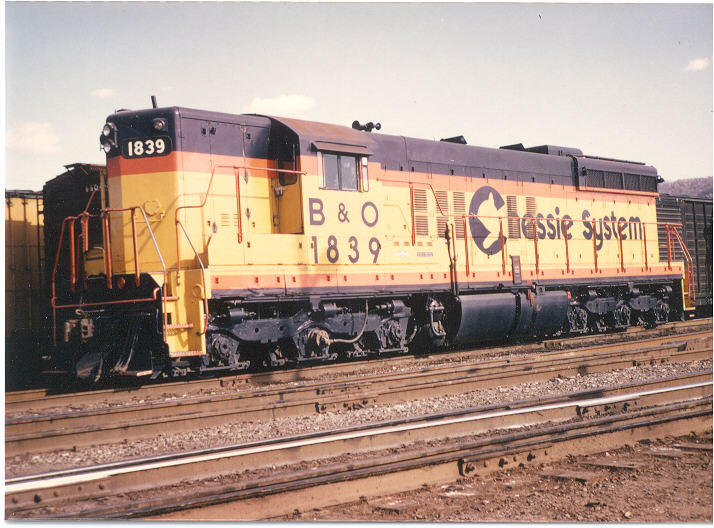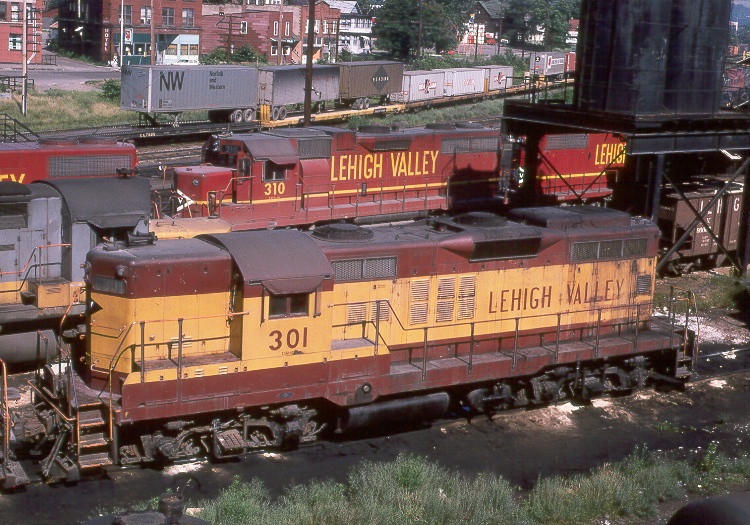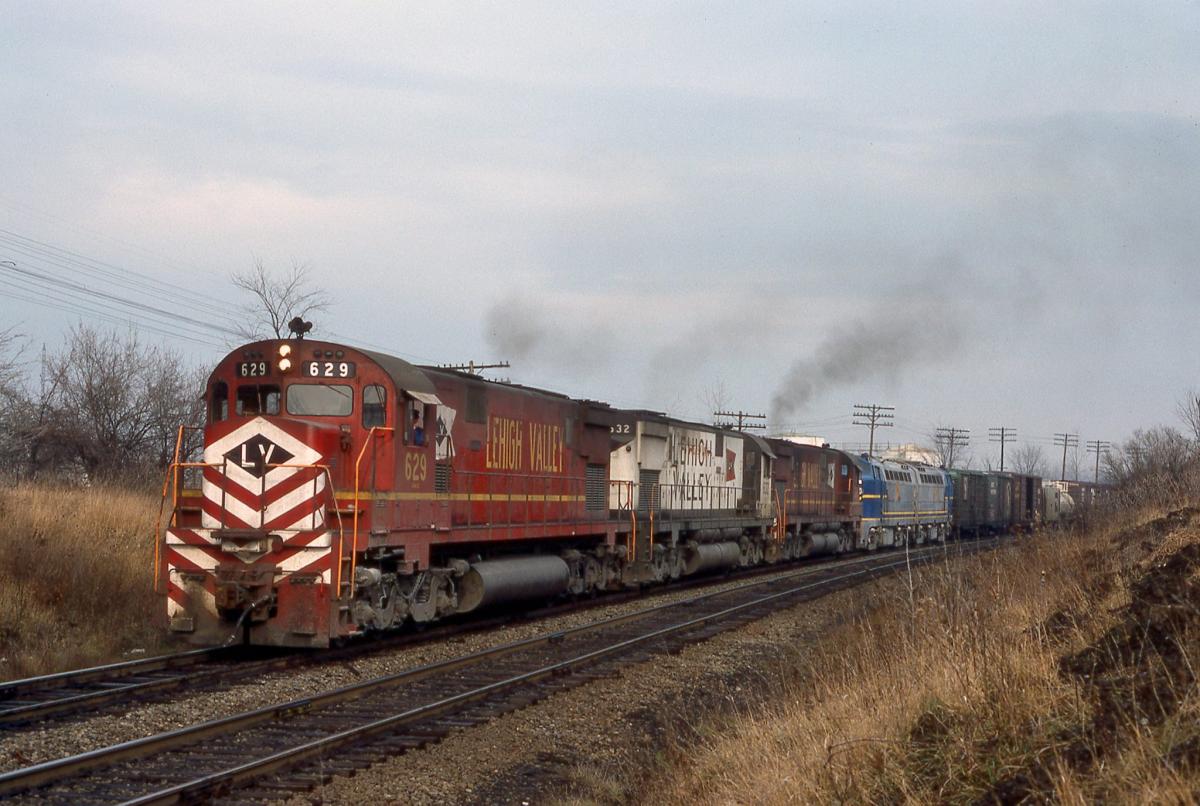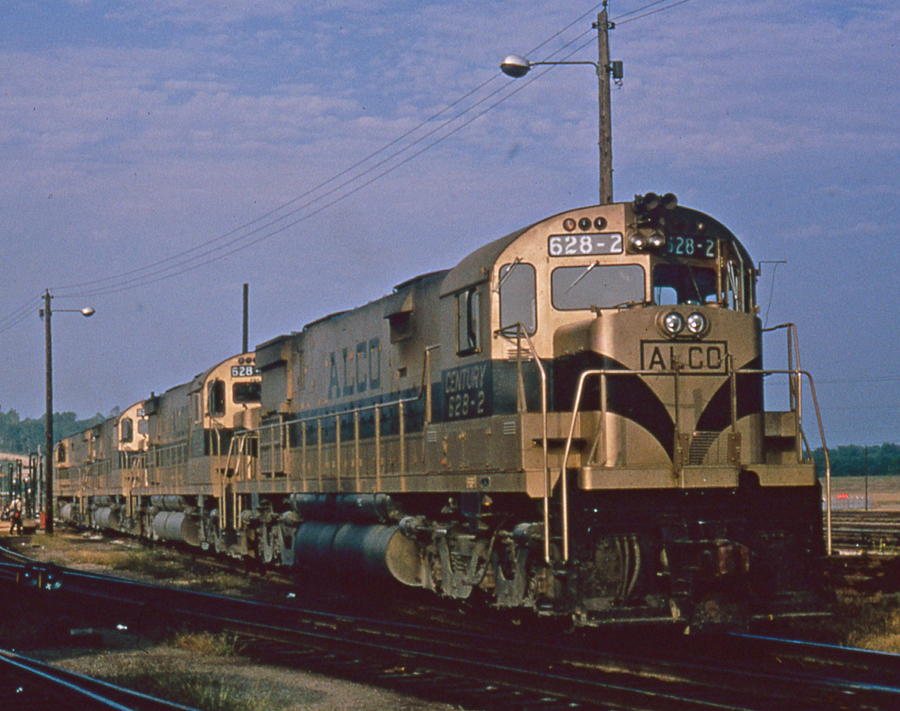From Alco's first entries into the diesel locomotive market, they had been allied with GE. Alco built the engines and bodies and frames and GE provided all the electrical parts. But when Alco's reputation took a blow from their 244 engine's reliability troubles, their market share began to slide. GE had also allied with Fairbanks-Morse (hence the name of the F-M "Erie-Builts", which were assembled at GE's Erie plant) but F-M had never made inroads to the market before quitting in 1956. In 1959, GE finally became dissatisfied with the Alco-GE partnership and decided to jump straight into the road locomotive business feet first.
Now, there was a precedent for GE building entire locomotives. From the 1930s onwards, GE had produced a dizzying array of switcher locomotives of different configurations and weights, typically using either Caterpillar or Cooper-Bessemer engines. GE had also produced full-size straight electric locomotives, competing against Westinghouse. These included the legendary PRR GG1, a design that wasn't replaced until 50 years after its introduction. And before the release of the first North American U-series, GE had been building a bunch of diesel road freight locomotives for foreign markets with reasonable success.
In 1959, GE dropped the Universal Series lineup into the US market and blew a hole in Alco and EMD's hulls. Their timing was perfect, as many railroads fleets of early EMDs and Alcos and Baldwins and F-Ms were starting to get up there in years and become underpowered, as well as starting to suffer reliability issues. Baldwin and F-M had left the market a few years earlier, and many railroads were reluctant to purchase the newer Alcos due to reliability issues in their earlier models.
The U-Series (called U-boats by crews and railfans) used a naming system similar to Alco's Century series ironically. The U stood for Universal, the next two digits stood for horsepower, and the following letter represented powered axles per truck (a B is 2, a C is 3).
U25B: The opening shot in GE's salvo was the 2500hp, 2-axle U25B, introduce in 1959. Rather than rely on third-party engines, it used GE's own FDL-16 4-cycle, 16-cylinder turbocharged diesel (seems that GE learned that Alco's turbo 4-strokes were ahead of the curve) and was relatively light for its size, while developing great tractive effort. Railroads liked them for their power, simplicity and ease of maintenance and GE moved 478 of them, double the amount of EMD's contemporary GP20 and more than twice the combined sales of Alco's C424s and C425s.

U25C: Introduced in 1963 as a 6-axle variant of the U25, it failed to find as much success. While 6-axle locomotives had more tractive effort (GE claimed 17% more due to more feet on the ground) and were easier on track (spread the weight better), railroads couldn't grasp the concept of high-power 6-axle units yet. In their mind, 6-axle units were for working on light branch lines and din't need huge power. So the U25C only moved 113 units.

U28B: In 1966, GE released an update of the U25B with 300 extra horsepower. With hard times ahead in the railroad industry, and many railroads already having purchased hordes of U25Bs, plus the 3000hp EMD GP40 having come out a year before, the U28B was not quite as successful as its predecessor, moving only 148 units, but this still put to shame most models of the Alco Century range.

U28C: Alongside the U28B, GE introduced a U28C. Again, it was the 2500hp model with a few more horsepower on top. The problem was, it was hitting the market after EMD's SD40, which also offered an additional 200hp. So the U28C only drew 77 buyers, while EMD's SD40 moved over 1200 locomotives. Interestingly, there was a passenger service variant called the U28CG (G for generator) which was a U28C with a steam generator for passenger car heating, as well as gearing more suited to higher speeds. These were designed for Santa Fe, who wanted to retire their aging EMD E and F-units, and they bought 10 of them. But after derailment troubles began with the U28CG, Santa Fe stripped the generators from them, regeared them and shoved them in freight use before cutting them all up

U30B: Also introduced in 1966 was the 3000hp U30B, designed to combat the EMD GP40 and the Alco C430. Fairing better than the U28B with 298 sold, it still failed to recapture the market in quite the same way as the U25B, part of that being that the 4-axle market was on its way out. Interestingly, Norfolk & Western ordered all of theirs with a high short hood, which was not an option GE offered but a configuration that N&W preferred. Not one to turn away a prospective customer, GE complied and N&W rewarded them with a 110 unit purchase

U30C: Marking the beginning of the 6-axle's rise to dominance, the U30C sold 606 locomotives, over twice what the U30B sold. But the U30C was marked with reliability issues with traction motors, causing many railroads to stick with SD40s and their upgrade the SD40-2. There was also a carbody variant with fluted sides, a steam generator and passenger gearing built for the Santa Fe called a U30CG and an Amtrak version called a P30CH (nicknamed Pooches) Unfortunately, these suffered the same derailing issues as the U28CG at higher speeds and both Santa Fe and Amtrak subsequently parked them and went to EMD for F40s.


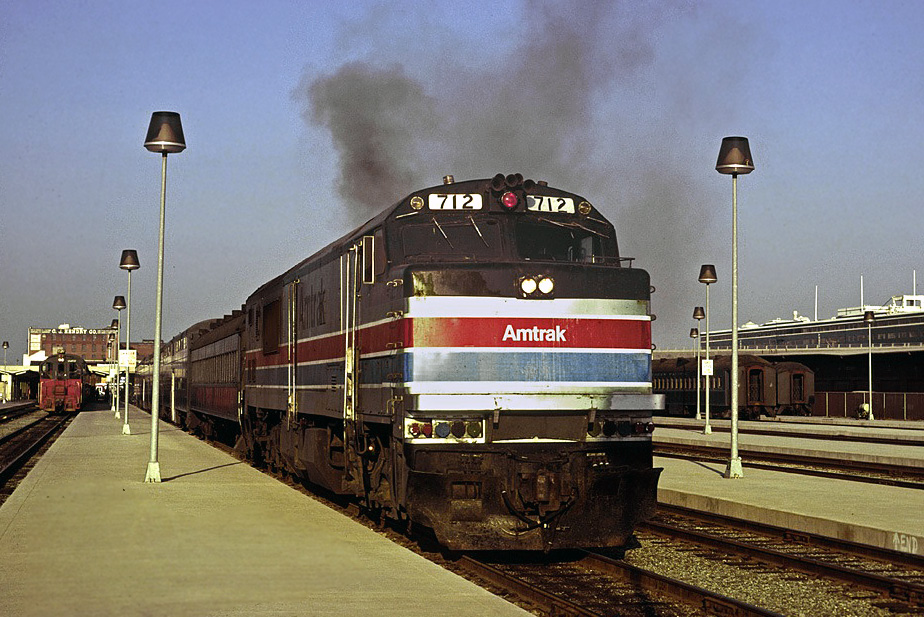
U33B: After the poor sales of the U30B, GE wondered if the solution was more horsepower and launched the 3300hp U33B. They were wrong and misread the market's shift away from four-axle units. This resulted in GE's worst-selling B-truck locomotive, at only 137 sold, with a whopping 83 going to Penn Central. the most noteworthy part of the U33B was that it introduced the hammerhead radiator flares that would become a GE trademark all through the later -7 and -8 production.

U33C: Outselling the somewhat disastrous U33B, the U33C showed that 6-axle units were the future. Not as strong a seller as the U30C, and suffering early production reliability woes, the U33C still sold 375 units, with Southern Pacific clearly a fan at 194 units purchased. Discouraged with the U28CG and U30CG, Santa Fe did not try to order a passenger version.

U36B: Still trying to make things work in the 4 axle market, in 1969 GE introduced the 3600hp U36B. EMD had never cataloged an GP45 and Alco, who had now ceased to exist, had never logged a C436, which should have been a sign to GE. 900hp per axle was just too much for the era that didn't yet have computerized traction control, and the U36B earned a reputation for wheelslip at the hint of throttle application. They only sold 56, 17 to Auto Train Corporation and 39 to Seaboard Coast Line, which made them the worst selling 4-axle they built. Still, both purchasers used them well into the 1980s, so perhaps they weren't as vile as their reputation.

U34CH: Preceding the U36C in GE's catalog was the U34CH. Designed for use in commuter service, the engine was mechanically the same as the U36's, but was rated at only 3430hp because the engine had to run below peak horsepower to get the correct AC voltage frequency at the passenger car power generator. Turn the head end power generator off, and they could make the full 3600hp. Built in the beginning of 1970 for the Erie-Lackawanna and New Jersey Transit, they served well into the '90s before retirement, with one even set aside for preservation.

U36C: Trying to combat EMD's SD40-2, as well as their impending SD45, GE introduced the 3600hp U36C. But they still struggled against EMD's reputation, experience and technology. Santa Fe liked them though, snapping up 100, even after their U28CG and U30CG troubles. Sales hit 236 for the biggest of the standard-production U-series.

U18B: Nicknamed the "Baby Boat", the U18B was one of the last general production GE U-series cataloged. Making only 1800hp from a unique 8-cylinder FDL engine variant, and physically much smaller and lighter than it's brothers, the U18B was intended for use in light branch line service where 3000hp monsters wouldn't do. The problem is, railroads had scads of old first-generation diesels that they could employ in that job without spending coin on brand new locomotives. They only sold 163 of them, and 105 of those were to the Seaboard Coast Lines. If SCL hadn't had such a fascination with them, sales would have been dismal. GE had been planning a successor unit for their -7 lineup, called a B18-7, but the poor sales of the U18 shelved that plan.

U23C: Alongside the U18B, GE tried to offer a 2300hp 6-axle version for the same purpose. Using a 12-cylinder FDL variant, they used the same frame and body of a U28C, just with less hood doors. But GE had failed to learn from Baldwin, Alco and EMD's attempts to offer branch line and transfer locomotives, and the U23C remained unpopular in the US, only selling 53 locomotives, although Brazil ordered 170 for their federal railroad.

U50: Just like EMD's Centennials and Alco's C855, GE tried to satisfy the Union Pacific's appetite for monstrous locomotives. GE had earlier collaborated with Alco on UP's gas turbine electrics, so they took a crack at a diesel electric, with the big U50. With the engines from 2 U25Bs and 4 2-axle trucks, they were over 83 feet in length and weighed 557,000 pounds. UP took delivery of 23 of them in 1963 and Southern Pacific grabbed up a few as well. UP operated theirs until 1977 before retiring them all and scrapping them, while the SP was less impressed and cut theirs up earlier.

U50C: As the U50 was just too big and heavy, GE took another crack at building an engine with the same pulling power, but a slightly more manageable package. The U50C used 2 uprated U23C 12-cylinder engines, making 2500hp a piece, instead of the 2 16-cylinder U25 engines in the U50. They also rode on two C trucks, instead of four B trucks. This made them only 442,660 pounds, but they were still too heavy for the roadbed and suffered numerous reliability issues as well. UP still bought 40 of them, but was never particularly pleased with them and retired them all and had them cut up in 1978, after only 7 years of service.







